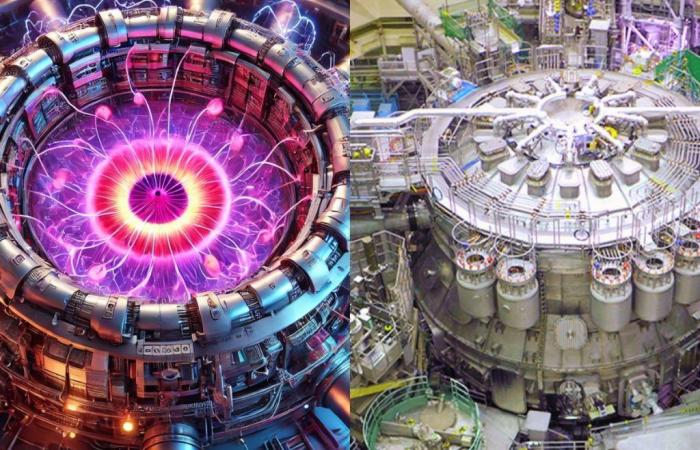
The Japanese Tokamak sets a world record with a plasma volume of 160 cubic meters: a giant step towards nuclear fusion.
The JT-60SA, the world’s largest operating tokamak and a technological gem developed collaboratively between Japan and Europe, has crossed a new threshold in the history of modern science. By reaching a plasma volume of 160 cubic meters, this sophisticated device sets a world record, validated by Guinness World Records. This feat, far from being a single and “stupid” figure, represents above all a major step forward towards the realization of fusion energy, a clean and almost inexhaustible source of energy.
Read also:
Precision engineering at the heart of nuclear fusion
The JT-60SA, the world’s largest tokamak to date, is a feat of engineering that employs revolutionary superconducting coils. These coils, cooled to temperatures around -268.7 degrees Celsius, play a crucial role in confining extremely hot plasma, of the order of 117 million degrees Celsius. This extreme level of control is vital for maintaining plasma stability, enabling prolonged experiments necessary for fusion energy viability.
Spain will get its hands on a new source of energy that no one had ever thought of and which is not an ecological chimera
A successful international collaboration between West and East
The success of the JT-60SA relies on a complex alchemy of magnetic fields that confine the plasma at its core. This confinement method combines a toroidal magnetic field, generated by external coils, with a poloidal magnetic field created by currents in the plasma itself. The scientists behind this project, from diverse backgrounds (mainly Europe and Japan), have worked tirelessly to refine these interactions, demonstrating a remarkable synergy between theoretical physics and practical application.
Major implications for the future of nuclear fusion
The JT-60SA’s contribution goes beyond just breaking one more record in fusion. Japan’s National Institute of Quantum Science and Technology (QST) plans to apply the knowledge gained to future reactors such as ITER and DEMO. This data collected within the project will be crucial to harnessing larger plasmas, an essential step in improving the efficiency and profitability of fusion as an energy source.
A catalyst for fusion energy research and training
The JT-60SA not only innovates in terms of technology; it also serves as an educational platform for young scientists and engineers. Its experimental program, combined with modeling activities, provides a rich environment for hands-on training, preparing the next generation of leaders in fusion physics and engineering. This holistic approach ensures that technical advancement goes hand in hand with human development.
Rigorous validation and promising future
A series of meticulous operations were required to evaluate and refine the performance of the JT-60SA. These tests, ranging from vacuum pumping to plasma production, not only validated its unique capabilities but also increased confidence in its ability to support future research. Each testing phase was another brick in the building of scientific understanding, each time marking a small triumph for the international team involved.
At this rate, France will only achieve 17% of its ambitious program in this energy of the future, far behind Germany and Spain.
This article explores the incredible achievement of the Tokamak JT-60SA device, which set a new world record for plasma volume. This major advance in plasma science and magnetic confinement technology, the result of international collaboration and cutting-edge engineering, marks a turning point in the development of fusion energy, promising a clean and abundant energy source for the future.
Source : National Institue for Quantum Science and Technology
Visual created using Canva and images from the CEA.





